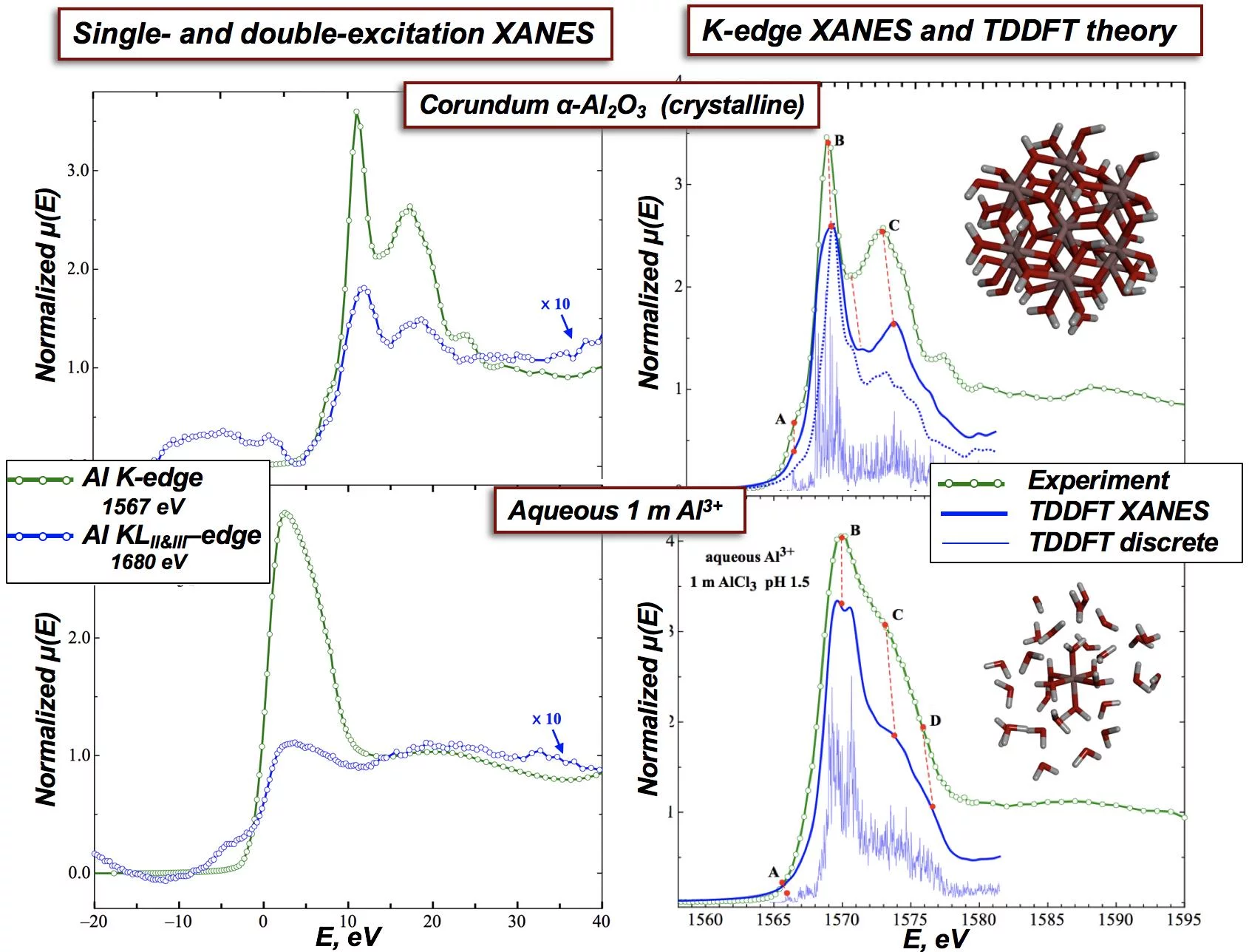We evaluate both the single-electron excitation (Al K-edge) and the double-electron excitation (KLII&II) X-ray absorption region that lies approximately 115 eV above the main Al K-edge (1566 eV) for crystalline (α-alumina (octahedral) and sodium aluminate (tetrahedral)) and aqueous standards (Al3+·6H2O (octahedral) and Al(OH)4– (tetrahedral)). The edge height of the KLII&III-edge is approximately 5-10% of the main K-edge. The KLII&III spectra contain white line features and extended absorption fine structure (EXAFS) that mimic the K-edge spectra. The K-edge spectra and K-edge energy positions are predicted using time-dependent density functional theory (TDDFT). The TDDFT calculations for the K-edge X-ray absorption near-edge spectra (XANES) reproduce the observed transitions in the experimental spectra of the four Al species. There are several reasons that the double-electron spectra are important. Foremost, these spectra contain an independent set of electronic and chemical state information that is thus far under-utilized because of the relatively weak transition and the lack of a comprehensive theory describing these transitions. With improved x-ray optics at synchrotron sources and through advances in x-ray absorption theory the new chemical information from this region is becoming available. There is also renewed interest in double-electron excitation processes with the advent of x-ray free electron lasers that have the intensities required to not only doubly ionize single atom sites but also have the capability to detect the far weaker cross sections of double-electron excitations from two different atom sites.
Contact
Dr. John L. FultonStaff Scientist, Physical Sciences Division
Pacific Northwest National Laboratory
Richland, Washington, USA
E-mail: john.fulton@pnnl.gov
Dr. Niranjan Govind
Computational Scientist, Environmental and Molecular Sciences Division
Pacific Northwest National Laboratory
Richland, Washington, USA
E-mail: niri.govind@pnnl.gov
Dr. Thomas Huthwelker
Swiss Light Source
Paul Scherrer Institut
Telephone: +41 56 310 5314
E-mail: thomas.huthwelker@psi.ch
Original Publication
Electronic and Chemical State of Aluminum from the Single- (K) and Double-Electron Excitation (KLII&III, KLI) X-ray Absorption Near-Edge Spectra of α-Alumina, Sodium Aluminate, Aqueous Al3+·(H2O)6, and Aqueous Al(OH)4–John L. Fulton, Niranjan Govind, Thomas Huthwelker, Eric J. Bylaska, Aleksei Vjunov, Sonia Pin, and Tricia D. Smurthwaite
_J. Phys. Chem. B, 119 (26), pp 8380–8388 _, June 2015
DOI: 10.1021/jp511602n
